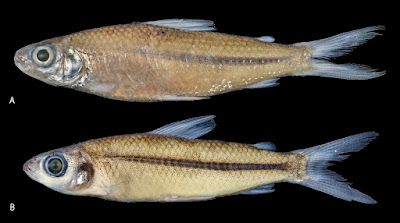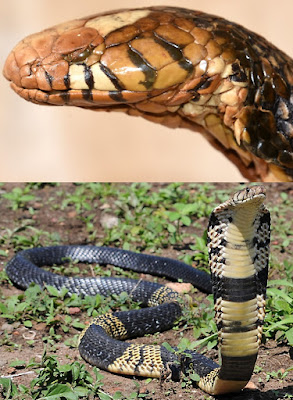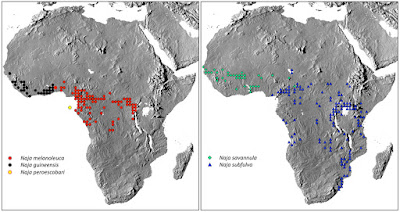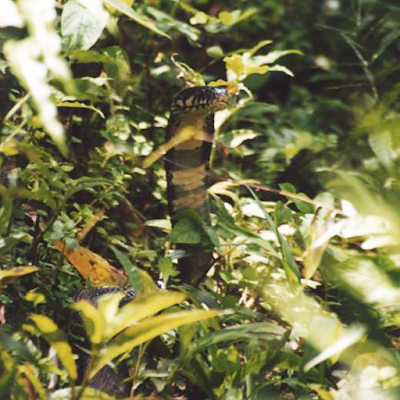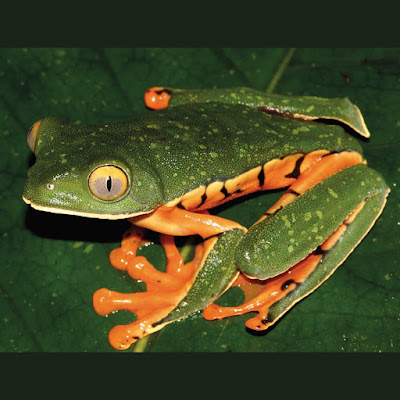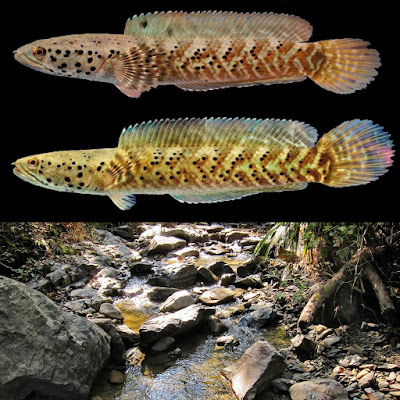[Most Recent Entries] [Calendar View]
Wednesday, August 1st, 2018
| Time | Event | ||||
| 3:45a | [Ichthyology • 2018] Cyphocharax muyrakytan • A New Cyphocharax (Characiformes: Curimatidae) from the Lower Rio Tapajós, Amazon Basin, Brazil
A new species of Cyphocharax (Characiformes: Curimatidae) is described from the lower Rio Tapajós basin, including its tributary, the Rio Arapiuns, Pará, Brazil. The new species is diagnosed from congeners by a combination of characters that includes overall body light-colored, with a silvery hue, lacking any pattern of stripes or blotches, a distinctly straight body profile, and some meristic and morphometric features. Comparisons with similar congeners as Cyphocharax festivus, Cyphocharax leucostictus, Cyphocharax nigripinnis, and Cyphocharax plumbeus, some of which occur sympatrically with the new species, are presented. Cyphocharax muyrakytan, new species Etymology.— From the Tupi muyrakytã (muiraquitã in Portuguese), an amulet originally used by Indians of the Amazon valley, especially those belonging to the extinct Tapajó culture, typically carved as a sitting frog from a green jade stone. A noun in apposition. Gustavo C. Bortolo, Flávio C. T. Lima and Bruno F. Melo. 2018. A New Cyphocharax from the Lower Rio Tapajós, Amazon Basin, Brazil (Characiformes: Curimatidae). Copeia. 106(2); 346-352. DOI: 10.1643/CI-17-656 Uma nova espécie de Cyphocharax (Characiformes: Curimatidae) é descrita da bacia do baixo Rio Tapajós, incluindo seu tributário, Rio Arapiuns, estado do Pará, Brasil. A nova espécie é diagnosticada das congêneres por uma combinação de caracteres: colorido geral do corpo claro, com brilho prateado, sem padrões de estrias ou manchas, perfil do corpo distintamente reto, e alguns caracteres merísticos e morfométricos. Comparações com congêneres similares como Cyphocharax festivus, Cyphocharax leucostictus, Cyphocharax nigripinnis, e Cyphocharax plumbeus, alguns dos quais ocorrendo simpatricamente com a nova espécie, são apresentadas. | ||||
| 7:35a | [Herpetology • 2018] Integration of Nuclear and Mitochondrial Gene Sequences and Morphology Reveals Unexpected Diversity in the Forest Cobra (Naja melanoleuca) Species Complex (Serpentes: Elapidae) in Central and West Africa: Naja (Boulengerina) guineensi Abstract Cobras are among the most widely known venomous snakes, and yet their taxonomy remains incompletely understood, particularly in Africa. Here, we use a combination of mitochondrial and nuclear gene sequences and morphological data to diagnose species limits within the African forest cobra, Naja (Boulengerina) melanoleuca. Mitochondrial DNA sequences reveal deep divergences within this taxon. Congruent patterns of variation in mtDNA, nuclear genes and morphology support the recognition of five separate species, confirming the species status of N. subfulva and N. peroescobari, and revealing two previously unnamed West African species, which are described as new: Naja (Boulengerina) guineensis sp. nov. Broadley, Trape, Chirio, Ineich & Wüster, from the Upper Guinea forest of West Africa, and Naja (Boulengerina) savannula sp. nov. Broadley, Trape, Chirio & Wüster, a banded form from the savanna-forest mosaic of the Guinea and Sudanian savannas of West Africa. The discovery of cryptic diversity in this iconic group highlights our limited understanding of tropical African biodiversity, hindering our ability to conserve it effectively. Keywords: Integrative taxonomy, Africa, Naja melanoleuca, Naja guineensis sp. nov., Naja savannula sp. nov., Elapidae, systematics, Reptilia Naja (Boulengerina) guineensis sp. nov. Broadley, Trape, Chirio, Ineich & Wüster Naia melanoleuca (not Hallowell) Boulenger, 1896: 376 (part, var. B [c,d], C). Naja sp. 2 cf. melanoleuca Hallowell, 1857 (blackish dorsum) Trape & Baldé, 2014: 318. Naja sp. 2 cf. melanoleuca (forest form). Trape & Baldé, 2014: 336. Diagnosis. Naja guineensis can be distinguished from the partly sympatric N. savannula sp. nov. by lacking extended dorsal banding, often having 17 rather than 19 dorsal scale rows at midbody, a generally lower subcaudal scale count, fewer ventral bands, a lesser posterior extent of the ventral banding, and a strong tendency towards melanism in adults. Specimens with 19 midbody dorsal scale rows can be distinguished from N. melanoleuca through the reduced number of ventral bands, lesser posterior extent of banding and tendency of ontogenetic melanism from N. subfulva in lacking a lighter anterior dorsum and through ontogenetic melanism, and from N. peroescobari in having the posterior chin shields in contact. Variation. Midbody dorsal scale row counts of 17 and 19 are approximately equally common in this species. In large adults, light pattern elements on the head and throat often become heavily suffused with black pigment, leading to a virtually entirely melanistic snake. Some specimens have 1–4 generally faint or poorly defined light bands across the neck, and occasionally an ocellate hood marking. Largest recorded: 1818+437 = 2255 mm, from Ballassou, Guinea (IRD 4213.G), but larger specimens have been observed. Based on locality, Menzies’ (1966) report of a specimen measuring “eight feet, eight inches” (264 cm) from Bo, Sierra Leone, is likely to refer to this species. Etymology. The specific epithet guineensis means “from Guinea” and is chosen to reflect the distribution of the species in the Upper Guinea forests of West Africa, part of the West African Forests biodiversity hotspot (Myers et al., 2000). Suggested common name. Black forest cobra. Distribution. The distribution of Naja guineensis appears to be restricted to the Upper Guinea Forests of western Africa, from western Togo to Liberia and Guinea (Trape & Baldé, 2014) (Fig. 6). There is a single record from Contuboel, Guinea Bissau (MBL 535). All other records 10°N or lower. Naja (Boulengerina) savannula sp. nov. Broadley, Trape, Chirio & Wüster Naia melanoleuca (not Hallowell) Boulenger, 1896: 376 (part, var. D). Naja “banded form” Hughes, 2013: 128. Naja sp. 1 cf. melanoleuca Hallowell, 1857 (yellow banded dorsum) Trape & Baldé, 2014:318. Naja sp. 1 cf. melanoleuca (banded savanna form) Trape & Baldé, 2014: 336. Diagnosis: Distinguishable from other species of the N. melanoleuca complex by the presence of 3 to 8 semidivided yellowish or whitish bands on the anterior dorsal forebody, becoming uniform black caudad; venter yellow with 2 to 8 black bands. Generally higher mean subcaudal scale counts than the other species. Genetically diagnosable through possession of unique mitochondrial haplotypes (cytochrome b: GenBank MH337597–602; ND4: MH337403–408) and unique PRLR and UBN1 haplotypes (PRLR: MH337501–504; UBN1: MH337532– 535). Variation: Dorsal scale rows on neck 19–25, at midbody 19, before vent 12–15; ventrals 211–233, subcaudals 63–77 (Table 8). Dorsal semi-divided yellow bands 3–8; ventral principal black bands 2–8 (Fig. 7). Largest recorded: 1825+405 = 2230 mm, from Medina Djikoye, Senegal (IRD 6155.S). Etymology: The name is derived from the contraction of its savanna habitat and annulated colour pattern and was coined by Barry Hughes in an unpublished 1968 manuscript. We have retained this name at the request of our colleague Barry Hughes. Suggested common name: West African banded cobra. Distribution: Senegal and Gambia east to northern Cameroon (Fig. 6). Naja savannula appears to be restricted to gallery forest areas in Africa in Guinean Forest/Savanna Mosaic, extending northwards into West Sudanian Savanna (Chirio, 2003, 2013; Monasterio et al., 2016). Our records are mostly from latitudes 10–14°N, except in the Dahomey Gap in eastern Ghana and Benin, where the species approaches the Gulf of Guinea Coast. The eastern extent of the range is poorly understood. A specimen from Margui Wandala district, northern Cameroon (approx. 10.5°N 13.6°E; MNHN 1962.0022) appears to be assignable to this species, and one of us (JFT) recently collected a specimen from Mboura, 20 km SW Baïbokoum, Logone Oriental Province, Chad (7.598°N, 15.596°E; IRD 2281.N), and there is a recent record from near Niamey, Niger (LC, unpublished data). It seems likely that the species has a wider distribution in northern Cameroon, extreme southern Chad and possibly even extreme northwestern Central African Republic (CAR).
Naja (Boulengerina) melanoleuca Hallowell, 1857 Naia haie var. melanoleuca Hallowell, 1857, Proc. Acad. Nat. Sci. Philadelphia: 61. Type locality: Gabon, syntypes ANSP 6875–76, 6878–79. Naja haje var. leucosticta Fischer, 1885, Jahr. Hamburg. Wiss. Anst. 2: 115, pl. v, fig. 11. Type locality: Cameroon and Ogooué River, Gabon, syntypes ZMH 4280, 7048, 7299–7302. Naia melanoleuca; Boulenger, 1896: 376 (part, vars. A [a,b] & B [a,b]) Naja melanoleuca melanoleuca; Laurent, 1956: 290, pl. xxvi, fig. 2. Naja (Boulengerina) melanoleuca; Wallach et al., 2009. Boulengerina melanoleuca; Wallach et al., 2014: 122. Aspidelaps bocagei Sauvage, 1884: 204 (type locality: Gabon and Majumba; holotype MNHN 1884.0015) has been listed as a synonym of N. melanoleuca (e.g., Broadley, 1983; Wallach et al., 2014; Ceríaco et al., 2017), but is in fact a synonym of Naja annulata, as is evident from Sauvage’s description, which notes approximately 20 dark double bands along the entire body length, and 21 mid-dorsal scale rows (see also Schmidt, 1923). Diagnosis: Dorsum black, often with 1–3 semidivided yellow crossbands on the neck, the first may be an ocellus; venter yellow with 4 to 6 black bands in the first 100 ventrals, thereafter uniform black. Variation: Dorsal scale rows on neck 19–27, at midbody 19 (very rarely 17 or 21); ventrals 209–230; subcaudals 59–74 (Table 8). Supralabials 7, the third and fourth entering the orbit; infralabials 8, the first four in contact with the anterior sublinguals, no cuneate; preocular 1; postoculars 3 (very rarely 2 or 4); temporals 1+2 or 1+3; nuchals bordering temporals 5–9, usually 7. Colouration: Head brown, the supralabials barred black and yellow, chin yellow. Black above, sometimes a yellow monocellate marking on the hood, or 1–3 small yellow blotches, the dorsal scales may be tipped with white in juveniles (Fig. 8). Yellow or white below with 4 to 6 black bands on the first 100 ventrals, usually uniform black thereafter. Largest recorded: 2250+420 = 2670 mm, from Moniya, Ibadan, Nigeria (Butler, 1982: 110). Suggested common name: Central African forest cobra. Distribution: Centered on the Congo Basin, west to southwestern Nigeria and possibly southern Benin, south to northern Angola, not extending east of the Albertine Rift Valley, where it is replaced by N. subfulva. The western range limits are poorly understood. Populations from southeastern Nigeria are clearly assignable to this form. A few specimens from Lamta, southern Benin (IRD 12.B, IRD 54.B, IRD 60.B), and Ghana (MNHN 1983.0663–64; no further locality information) also appear to be assignable to N. melanoleuca. Naja (Boulengerina) subfulva Laurent, 1955 Suggested common name. Brown forest cobra. Diagnosis. Midbody scale rows 19, except along coastal regions of East Africa (Kenya, Tanzania), where most specimens have 17 rows. Pattern highly variable. Adults of most populations distinguishable in having a brown forebody, often with spots, generally becoming darker or blackish posteriorly. Labial pattern may be attenuated in many adults. Venter with several black, dark brown or greyish crossbands on the first 50 ventrals, gradually becoming uniform black caudad in some populations, but often remaining entirely light, often with extensive darker spotting or speckling. Where present, the light forebody and/or light posterior venter are diagnostic for this species. Generally fewer ventral bands and ventral scales than N. melanoleuca or N. savannula and fewer subcaudals than N. savannula (Table 8). Genetically diagnosable through possession of unique mitochondrial haplotypes (cyt b: GenBank MH337603–633; ND4: MH337409–439) and unique PRLR and UBN1 haplotypes (PRLR: MH337441–471; UBN1: MH337531, MH337536–562, MH337564–566). Variation. Dorsal scale rows on neck 19–27, at midbody 19 (very rarely 17 or 21); ventrals 196–226; anal entire; subcaudals 55–71 (Table 8). Supralabials 7 (very rarely 5 or 6), the third and fourth entering orbit; infralabials 8 (rarely 7), the first four (rarely three) in contact with the anterior sublinguals, no cuneate (very rarely one); preocular 1; postoculars 3; temporal 1+2 or 1+3; temporal bordering parietals 5–9, usually 7.
Naja (Boulengerina) peroescobari Ceríaco et al., 2017 Diagnosis. In the original description, Naja peroescobari was diagnosed from the other members of the N. melanoleuca group through a lack of white ventrals posterior to ventral 22, a lack of lighter markings on the dorsum, and the separation of the posterior chin shields. Our sample does not fully support the diagnostic value of these characters: at least one specimen (BMNH 1906.3.30.80) has the posterior chin shields in contact, and discrete dark bands separated by lighter bands (although often suffused with dark brown pigment) extend as far back as ventrals 45 and 55, respectively, in BMNH 1906.3.30.80 and MBL 1954. Naja peroescobari is distinct from N. subfulva in never having a brown forebody or a light posterior venter and in lacking dark speckling or spotting on the forebody. It displays greatly reduced ventral banding compared to N. melanoleuca and N. savannula, and, unlike N. guineensis, never has 17 midbody dorsal scale rows.The species is also diagnosable through unique mitochondrial haplotypes (Ceríaco et al., 2017; cyt b: GenBank MH337634; ND4: MH337440) and a unique PRLR haplotype (MH337499) Variation. See Table 8 and Ceríaco et al. (2017) for variation in scale counts and ventral banding in this species. Distribution. Restricted to the volcanic island of São Tomé in the Gulf of Guinea, where it seems to inhabit primarily the forested parts of the centre and south of the island, whereas it seems to be missing from the more open northeast (Ceríaco et al., 2017). Wolfgang Wüster, Laurent Chirio, Jean-François Trape, Ivan Ineich, Kate Jackson , Eli Greenbaum, Cesar Barron, Chifundera Kusamba, Zoltán T. Nagy, Richard Storey, Cara Hall, Catharine E. Wüster, Axel Barlow and Donald G. Broadley. 2018. Integration of Nuclear and Mitochondrial Gene Sequences and Morphology Reveals Unexpected Diversity in the Forest Cobra (Naja melanoleuca) Species Complex in Central and West Africa (Serpentes: Elapidae). Zootaxa. 4455(1); 68–98. DOI: 10.11646/zootaxa.4455.1.3 Luis M. P. Ceríaco, Mariana P. Marques, Andreas Schmitz and Aaron M. Bauer. 2017. The “Cobra-preta” of São Tomé Island, Gulf of Guinea, is A New Species of Naja Laurenti, 1768 (Squamata: Elapidae). Zootaxa. 4324(1); 121–141. DOI: 10.11646/zootaxa.4324.1.7 | ||||
| 8:09a | [Herpetology • 2018] Review of the Genus Cruziohyla (Anura: Phyllomedusidae) with Description of A New Species, Cruziohyla sylviae
Abstract The presented work summarises new and existing phenotypic and phylogenetic information for the genus Cruziohyla. Data based on morphology and skin peptide profiling supports the identification of a separate new species. Specimens of Cruziohyla calcarifer (Boulenger, 1902) occurring in Ecuador, Colombia, two localities in Panama, and one in the south east Atlantic lowlands of Costa Rica, distinctly differ from those occurring along the Atlantic versant of Central America from Panama northwards through Costa Rica, Nicaragua, to Honduras. A new species—Cruziohyla sylviae sp. n.—(the type locality: Alto Colorado in Costa Rica)—is diagnosed and described using an integrated approach from morphological and molecular data. Phylogenetic analysis of DNA sequences of the 16S rRNA gene confirms the new species having equal minimum 6.2% genetic divergence from both true C. calcarifer and Cruziohyla craspedopus. Key words: Amphibia, Variation, Taxonomy, Cruziohyla, northern South America, Central America, Middle America, Cruziohyla calcarifer, Cruziohyla craspedopus, Cruziohyla sylviae sp. nov., new species Cruziohyla sylviae sp. n. Sylvia’s Tree Frog / Rana arbórea de Sylvia. Etymology. The specific name sylviae is a patronym given in adoration of my first grandchild, Sylvia Beatrice Gray. Sylvia originates from the Latin word for forest Silva meaning ‘Spirit of the Forest’. Distribution. Occurs at low-mid elevation localities (below 750m) along the Cordillera Central of Central America, primarily along the Atlantic versant, from the Darien Province in southern Panama through Costa Rica and Nicaragua to southern Honduras (Fig. 10). See discussion. Andrew R. Gray. 2018. Review of the Genus Cruziohyla (Anura: Phyllomedusidae), with Description of A New Species. Zootaxa. 4450(4); 401–426. DOI: 10.11646/zootaxa.4450.4.1 Researcher names spectacular new frog after his granddaughter news.mongabay.com/2018/07/researcher-nam Resumen: Éste trabajo reúne la información fenotípica y filogenética, tanto nueva como conocida, del género Cruziohyla. Datos de la morfología y el perfil de péptidos de la piel apoyan la identificación de una nueva especie: los especímenes de Cruziohyla calcarifer (Boulenger, 1902) encontrados en Ecuador, Colombia, dos localidades en Panamá y una en las tierras bajas del Atlántico sudeste de Costa, difieren claramente de los encontrados a lo largo de la vertiente atlántica de América Central, desde Panamá hasta Honduras, incluyendo Costa Rica y Nicaragua. Una nueva especie—Cruziohyla sylviae sp. n.—(localidad tipo: Alto Colorado, Costa Rica)—es diagnosticada y descrita utilizando una aproximación integral de da tos morfológicos y moleculares. El análisis filogenético de las secuencias de ADN del gen 16S rRNA confirman que la nueva especie tiene al menos 6.2% de divergencia genética tanto de C. calcarifer como de Cruziohyla craspedopus. Palabras clave: Anfibios, variación, taxonomía, Cruziohyla, norte de América del Sur, América Central, América Medio, Cruziohyla calcarifer, Cruziohyla craspedopus, Cruziohyla sylviae sp. nov., nueva especie | ||||
| 3:19p | [Paleontology • 2018] Paludidraco multidentatus • New Highly Pachyostotic Nothosauroid Interpreted As A Filter-feeding Triassic Marine Reptile Abstract Two well-preserved specimens of a new eosauropterygian from the Upper Triassic of Central Spain are attributed to a new taxon, Paludidraco multidentatus gen. et sp. nov. It is a member of Simosauridae that presents several exclusive characters suggesting a highly specialized trophic adaptation. This discovery increases the already high ecological disparity of the Triassic marine reptiles. KEYWORDS: Sauropterygia, Simosauridae, Keuper, Spain Systematic palaeontology Sauropterygia Owen, 1860Eosauropterygia Rieppel, 1994 Nothosauroidea Baur, 1889 Simosauridae Huene, 1948 Paludidraco multidentatus gen. et sp. nov. Etymology. The generic name is composed of the Latin words paludos, meaning marshy (in reference to the El Atance reservoir) and draco, from the Latin word for dragon. The specific name refers to the Latin words multi, meaning numerous, and dentatus, for toothed. 
Conclusion: Remains belonging to two individuals of the new eosauropterygian Paludidraco multidentatus gen. et sp. nov. have been recovered from the Upper Triassic El Atance site (Central Spain). Paludidraco multidentatus is primarily characterized by a very slender mandible and numerous small and sicklelike teeth with pleurodont implantation, as well as an extremely pachyostotic axial skeleton. An ecological role analogous to that of extant manatees is interpreted for this bizarre sauropterygian. Therefore, this discovery increases the already high disparity of the sauropterygians from the Triassic. Carlos de Miguel Chaves, Francisco Ortega and Adán Pérez-García. 2018. New Highly Pachyostotic Nothosauroid Interpreted As A Filter-feeding Triassic Marine Reptile. Biology Letters. DOI: 10.1098/rsbl.2018.0130 | ||||
| 3:38p | [Ichthyology • 2018] Channa stiktos • Integrative Taxonomy Reveals A New Species of Snakehead Fish (Teleostei: Channidae) from Mizoram, North Eastern India
Abstract Channa stiktos, a new species of snakehead fish, is described from the River Kaladan and its tributaries, Mizoram, North Eastern India based on comparison of morphological and molecular features with closely related species. Channa stiktos is morphologically similar to C. ornatipinnis described from the Rakhine State of Myanmar, however, differs from it in having black spots on dorsal and ventral sides of the head (vs. no spots on dorsal and ventral sides of the head, but rather spots restricted to the post-orbital lateral region of the head), and lacking dark spot on the anal fin of juveniles (vs. presence of series of upto 10 dark spots). The molecular analysis, based on cytochrome c oxidase subunit I (COI) sequences, shows that C. stiktos is distinct from other close Channa species, except clade 3 of C. ornatipinnis, available in the GenBank (interspecies distance ranges from 8.24–25.33%). Channa stiktos clustered cohesively with clade 3 of C. ornatipinnis (only 1.43% genetic distance) indicating that they are conspecific. The genetic distance between Channa stiktos and C. ornatipinnis (from the type locality and another locality in the Ayeyarwaddy basin) are 8.24–8.59%, and between C. stiktos and C. pulchra is 12.92%, supporting the conclusion that they are different species. Key words Channa ornatipinnis, C. pulchra, COI, Taxonomy, Freshwater fish, River Kaladan, Indo-Burma Biodiversity hotspot.
Channa stiktos sp. nov. Diagnosis. Channa stiktos is distinguished from all other species of Channa, except C. ornatipinnis, C. pulchra, C. pardalis, C. melanostigma and C. stewartii, by a unique colour pattern consisting of numerous large, black spots on the head and the body. Channa stiktos is distinguished from C. ornatipinnis in having black spots on dorsal and ventral sides of the head (vs. no spots on dorsal and ventral sides of the head, but rather spots restricted to the post-orbital lateral region of the head), and absence of dark spot on the anal fin of juveniles (vs. presence of series of up to 10 dark spots). It can be distinguished from Channa pulchra in having black spots on the body well distributed above and below the lateral line (vs. sparsely distributed or absent on the body below the lateral line); from C. pardalis in having black spots all over the head (vs. spots restricted to post-orbital region of the head); and from both C. stewartii and C. melanostigma in having well defined black spots on the head (vs. spots on the head absent, and restricted to the body). Etymology. The specific epithet ‘stiktos’ meaning ‘spotted’ in Greek, referring to the numerous conspicuous spots present on the body. It is use as an adjective. Distribution and habitat. Channa stiktos was collected from the Ianava, Niawh and Tiau Rivers of the Kaladan River drainage, Mizoram, North Eastern India (Fig. 3). The streams were clear, slow flowing with cobble substrate and no aquatic vegetation (Fig. 4). Lalramliana, John Daniel Marcus Knight, Denis Van Lalhlimpuia and Mahender Singh. 2018. Integrative Taxonomy Reveals A New Species of Snakehead Fish, Channa stiktos (Teleostei: Channidae), from Mizoram, North Eastern India. VERTEBRATE ZOOLOGY. 68(2). |
| << Previous Day |
2018/08/01 [Calendar] |
Next Day >> |

